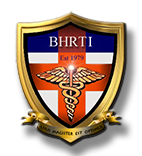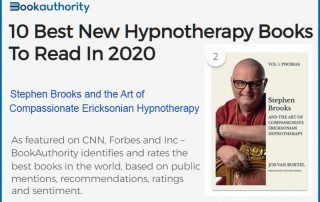
Ivan Tyrrell – author of How To Master Anxiety
You are very creative with words, you talk to different parts of a patient's mind, it’s so powerful!
Adam Eason – author of The Science of Self Hypnosis
Your course was eye opening, heartfelt and transforming for me personally and professionally
Bill O’Hanlon – author of Taproots, Solution-Oriented Hypnosis and a Guide To Trance-Land.
Stephen Brooks knows how to do effective Ericksonian Hypnosis and teach others how to do it.
Dan Jones – author of Advanced Ericksonian Hypnotherapy Scripts
Your legendary hypnotherapy courses are the most highly regarded in the field
Dr Ernest Rossi – author with Milton H Erickson of the Collected Papers of Milton H Erickson
Stephen Brooks and the art of Compassionate Ericksonian Hypnotherapy surely sets the highest standard.
Igor Ledochowski – author of The Deep Trance Training Manual
Your training is unique, refined and dynamic, making each person feel an active part of the course
Kerin Webb – author of The Language Pattern Bible
You are the leaders in indirect Ericksonian Hypnosis
RECENT BLOG POSTS
8 Ways to Treat Bedwetting with Ericksonian Hypnosis
VIDEO: Stephen Brooks teaches how Milton Erickson treated Bedwetting (Enuresis) with Ericksonian hypnotherapy and tasking (with case studies) 1. Traditional therapy for treating bedwetting (enuresis) Milton Erickson rarely treated problems the traditional way. Instead he used new and innovative techniques such as tasking, metaphor and indirect suggestion. But as a benchmark, here are a number of ways therapists tradtionally treat enuresis, commonly known as bedwetting: Motivational therapy: This type of therapy focuses on helping the child feel in control of their bladder and encourages them to take steps to stay dry. This can include keeping a record of dry nights, setting a bedtime routine, and rewarding the child for dry nights. Biofeedback: This type of therapy uses electronic devices to help the child learn how to control their pelvic floor muscles. This can help the child empty their bladder more completely and prevent accidents. Alarm therapy: This type of therapy uses an alarm to wake the child up when they start to wet the bed. This can help the child learn to associate the feeling of a full bladder with waking up and going to the bathroom. 2. Traditional hypnotic approaches to treating bedwetting Even when
12 Facts about Non-verbal Communication and Hypnosis
VIDEO: Stephen Brooks Teaches the Importance of Unconscious Nonverbal Communication in Ericksonian Hypnotherapy 1. Ideomotor Response Ideomotor response is a phenomenon in which a person's unconscious mind can be communicated with through the use of muscle movements. Ideomotor response is often used in hypnosis as a way to communicate with the unconscious mind and to access information that is not available to the conscious mind. To test for ideomotor response, the Ericksonian hypnotherapist will ask the client's unconscious mind to focus on a particular object or thought and then to indicate their response by moving a finger - often on either hand to indicate yes or no. If the client is able to move their finger unconsciously in response to the hypnotist's suggestions, then it is likely that they are experiencing ideomotor response. Extensive research has been dedicated to investigating the ideomotor response phenomenon, a fascinating concept that has captured the attention of professionals across various fields, including psychology and hypnosis. This intriguing phenomenon establishes a connection between one's thoughts or mental imagery and physical responses, such as muscle twitches or movements. Understanding the intricacies of ideomotor response can provide valuable insights into how
Read the new book by Jos van Boxtel about Stephen Brooks innovative approach to hypnotherapy
STEPHEN BROOKS AND THE ART OF COMPASSIONATE ERICKSONIAN HYPNOTHERAPY We are proud to announce that our book “Stephen Brooks and the Art of Compassionate Ericksonian Hypnotherapy Vol 1 – Hypnotic Language Patterns” has been voted no 2 in the Book Authority list of the top ten books on hypnotherapy. Buy the book online HERE ABOUT THE BOOK The book written by hypnotherapy expert Jos van Boxtel describes in detail a unique demonstration session by renowned Ericksonian hypnotherapist and trainer Stephen Brooks. The client suffers from an extreme spider phobia, and Brooks helps her overcome her fear in one session. The book describes how he uses her behaviour, thinking style and beliefs to cure her phobia through hypnotic desensitization and double dissociation. Stephen Brooks is known for his compassionate style and complex hypnotic language, modelled after legendary hypnotherapist Milton Erickson. When he communicates with a client, it seems like he is holding a normal conversation, but with close observation, you will discern a sophisticated network of indirect suggestions, implications, links and metaphors. Pre-talk, trance induction and therapeutic intervention flow seamlessly into one another and lead to an automatic and unconscious change process The first half of the book provides an




